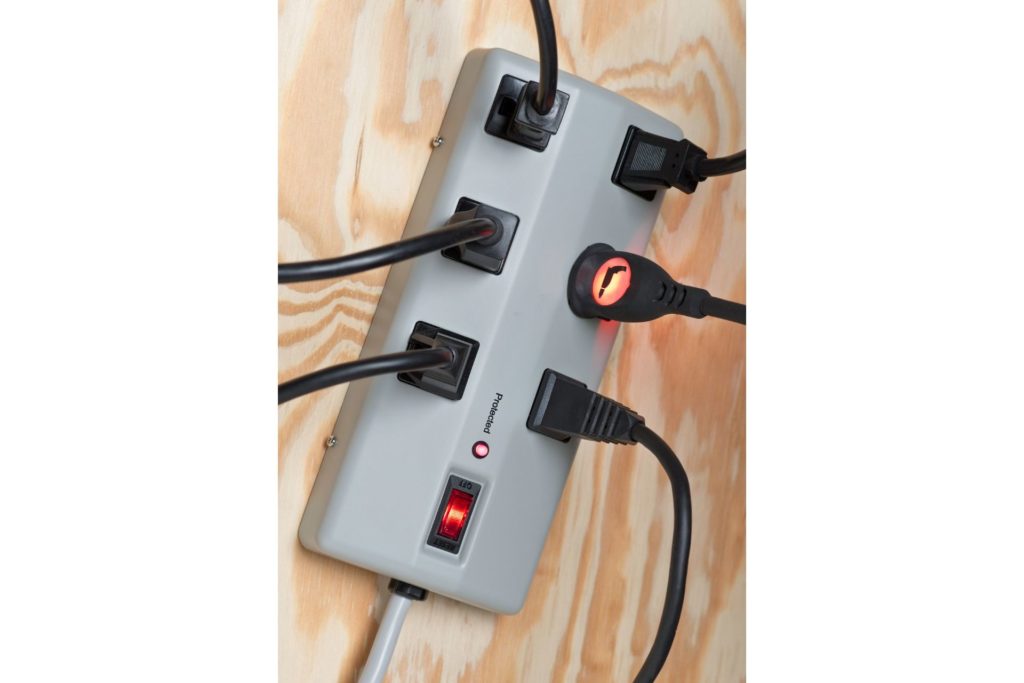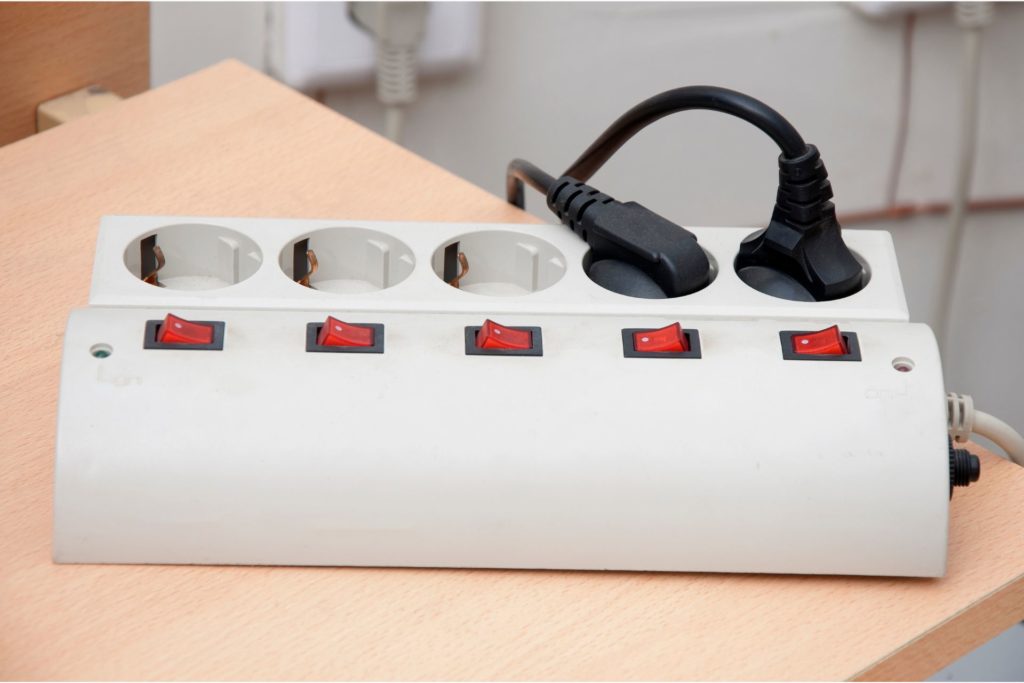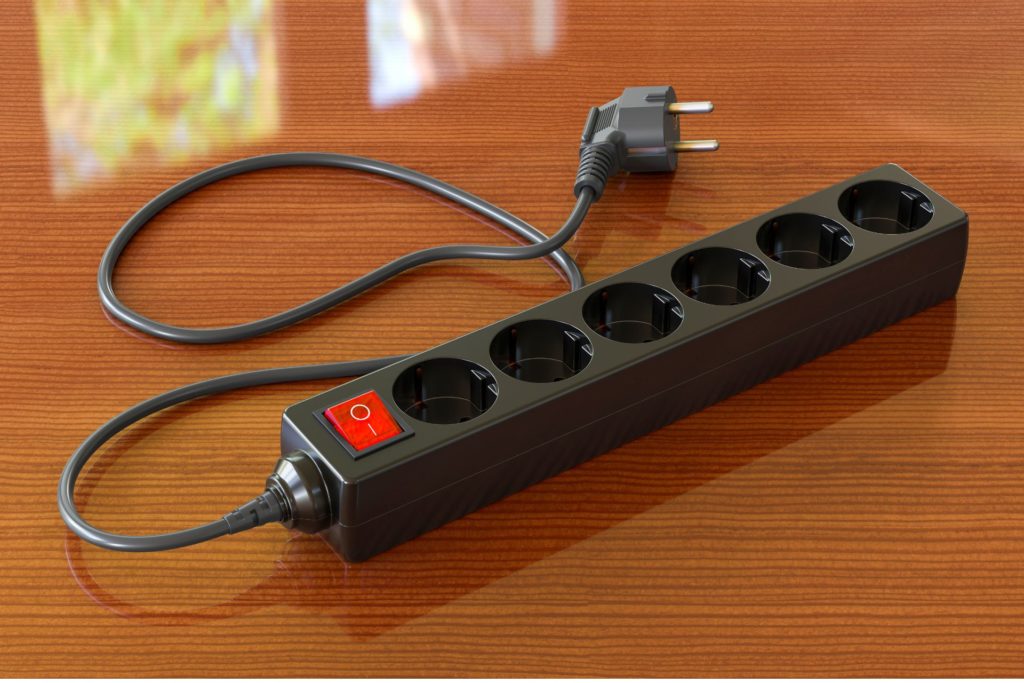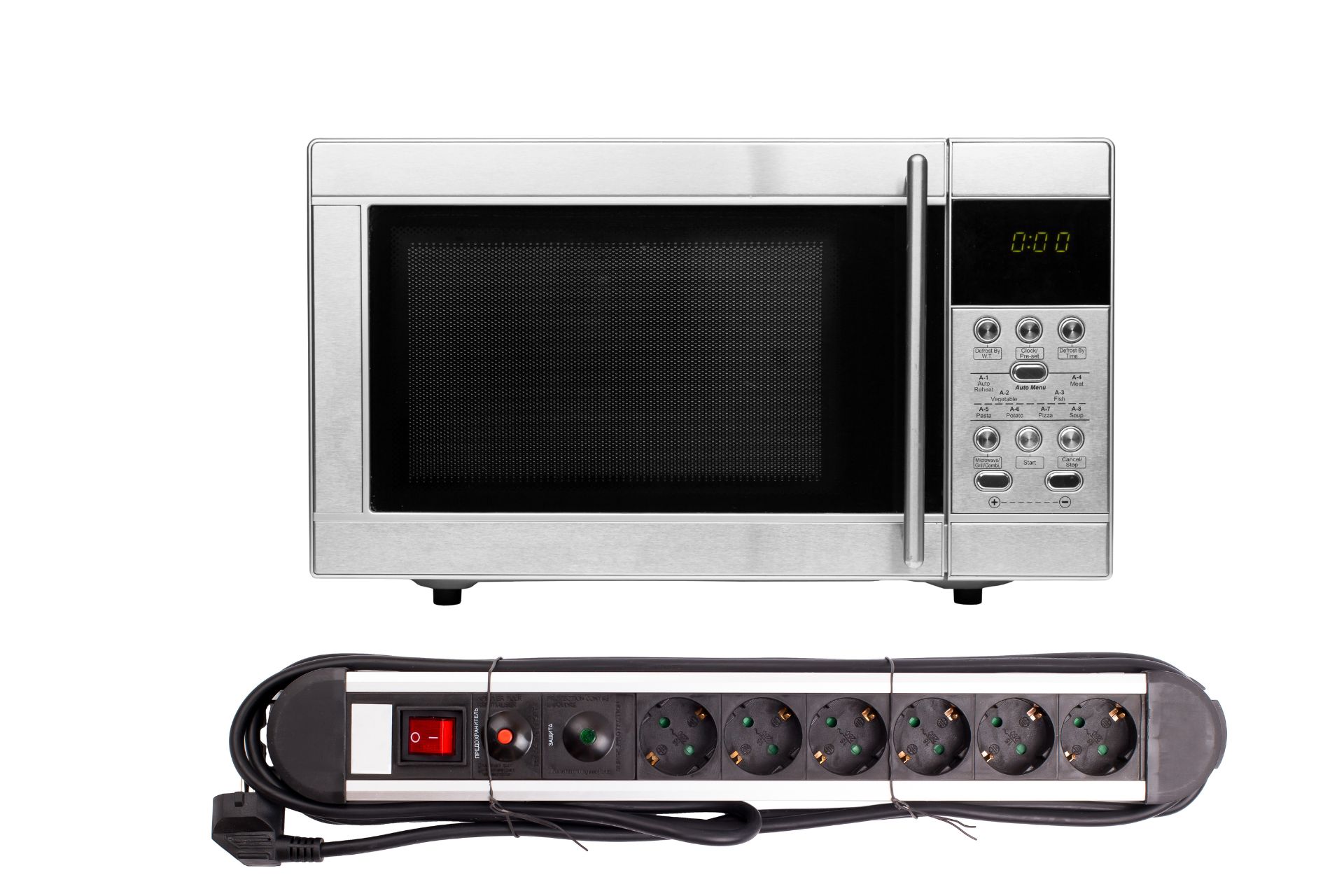You cannot plug a microwave into a power strip. But what about a surge protector? According to 69News At Sunrise, extension cords cause thousands of injuries each year. But do those figures apply to surge protectors? Can you trust them to protect your microwave? This guide will tell you.
Can You Plug A Microwave Into A Surge Protector?
You can plug a microwave into a surge protector but the only obstacle is the configuration of the microwave’s plug. For instance, a two-prong plug cannot fit a surge protector with three-prong outlets. The third prong signifies grounding. But in the absence of this limitation, you can plug a microwave into a surge protector.
A more critical question is whether or not the practice is safe.
The average technician will tell you that surge protectors do not pose a threat to microwaves. But ultimately, you can wreak havoc on your microwave if you forget to take the following factors into account:
1). Surge Protector Must Withstand The Current The Microwave Uses
Can the surge protector withstand the electrical requirements of the microwave? Surge protectors are no different from power strips and extension cords.
Yes, they have additional defensive mechanisms. However, you can still overwhelm them if you connect an appliance that exceeds the capacity of the surge protector.
If your surge protectors keep exploding and catching fire, don’t be so quick to blame the phenomenon on surges and spikes. Are you sure the surge protector can withstand the current the microwave uses?
If you check a surge protector’s documentation, it will reveal the limitations of the device.
2). Don’t Daisy Chain Surge Protector

Surge protectors and power strips are not that different. In fact, you wouldn’t be wrong if you described a surge protector as a power strip with surge protection technology.
You cannot daisy chain power strips because technicians associate the practice with fire and electrocution hazards. Daisy chaining increases the resistance, which, in turn, elevates the heat generated.
Therefore, if the surge protector is not long enough to reach the microwave, I do not want you to solve this problem by connecting multiple surge protectors. The resulting overload will kill the surge protector, leaving the microwave vulnerable to a surge.
3). Don’t Share A Surge Protector

How many devices have you plugged into the surge protector? Microwaves are heavy-duty devices. They cannot share a surge protector. You are more likely to overload the surge protector.
Surge protectors are not that expensive. Admittedly, the best surge protectors will cost you more. But you can secure a decent device for $50 or less. Give each heavy-duty appliance a surge protector. Don’t force them to share.
4). Have A Proper Ventilation
Don’t cover surge protectors with rugs, carpets, clothes, and other objects. Heavy objects will damage the surge protector, especially the power cord. You might compromise the conductors on the inside without breaking the jacket.
Carpets and rugs will interfere with the surge protector’s ventilation, allowing the heat to accumulate.
Is Surge Protector Necessary For Microwave?
Microwaves have a varistor. Surge protectors use this technology to defend against surges. In other words, manufacturers have given microwaves the tools they need to withstand powerline surges. They don’t need surge protectors.
But if that is true, why do homeowners pair microwaves with surge protectors? The MOVs in a surge protector have their limits.
Their defensive capabilities dimmish with each surge. Eventually, the surge protector will stop working, leaving the connected appliances vulnerable to surges and spikes.
What does this mean? If your area has an unstable grid or frequent thunderstorms, I suggest you invest in a surge protector. You cannot trust the microwave’s surge protection to persist. Once it fails, you can trust the external surge protector to take over.
Admittedly, the surge protector will eventually fail. But you can buy another one.
Why Does My Microwave Keep Tripping The Surge Protector?
You have a faulty microwave. Surge protectors are safe. They won’t interfere with the operations of the microwave. If the surge protector keeps tripping, one or both devices are at fault.
Surge protectors are not infallible. Some of them have factory defects you won’t notice until you connect the microwave. You may damage others by mishandling them. Otherwise, a microwave shouldn’t trip a surge protector.
Things To Consider Before Plugging Microwave Into Surge Protector
Surge protectors are not equal. Some are better than others. If you need help identifying a suitable surge protector for your microwave, try to keep the following in mind:
1). Get A Surge Protector With Higher Joule Rating
The joules are the most critical consideration. The joules reveal the amount of energy a surge protector can absorb. A higher joule rating produces longer-lasting surge protectors.
Don’t forget: each strike a surge protector takes diminishes its defensive capabilities. A surge protector with a high joule rating can take more hits before it stops working.
2). Look FOR UL 1449
Surge protectors will only receive a UL1449 certification after meeting strict design and performance requirements. Therefore, the absence of a UL1449 certificate should scare you because you cannot trust that surge protector to protect your microwave.
Look for this mark on the package or the surge protector. Counterfeit or substandard devices do not have this certification.
3). Get Surge Protector With Sufficient Outlets

How many outlets do you see on the surge protector? Like power strips, surge protectors will multiply the number of outlets at your disposal. How many devices do you want to operate?
You shouldn’t share the microwave’s surge protector with other devices. But if you want to connect light-duty items like phone chargers, ensure the surge protector has sufficient outlets to accommodate the additional items.
Keep the types of outlets in mind. I want you to prioritize surge protectors with USB sockets.
4). Check The Clamping Voltage
The clamping voltage is the voltage that triggers the surge protector. Surge protectors are supposed to transmit electricity to the microwave. Therefore, they cannot respond to the voltage the appliance uses.
A lower clamping voltage produces less tolerant surge protectors. A higher clamping voltage does the opposite. You don’t want the surge protector to permit destructive volumes of current to pass through before it takes action.
5). Check The Guarantee
What kind of guarantee does the manufacturer offer? Some brands will replace your surge protector if it fails. Others will pay for the microwave if it dies because the surge protector could not stop the surge.
The manufacturer will only compensate you if you did everything in your power to protect the microwave. For instance, if you daisy-chained the surge protectors, they may refuse to compensate you for the damaged microwave.
Best Microwave Surge Protector
Even if you know what to look for, finding a suitable surge protector for your microwave is not easy. This guide has identified the best surge protectors the market has to offer. They include:
1). Micromatic WS2910
This device will protect your microwave from surges, fluctuations, spikes, brownouts, and everything in between. It can protect appliances of 1500 watts. The indicator lights will keep you abreast of changes in the power.
If you don’t like it, the manufacturer offers a 100 percent money-back guarantee. The surge protector is small and lightweight.
2). Tripp Lite TP1208TELTV
This surge protector responds to surges and spikes. It comes with a right-angle plug and 12 outlets. Four of those outlets will fit larger transformer plugs. The cable is 8 feet, which is perfect for consumers that need an extension cord to cover long distances.
If you have concerns about the reliability of this device, the surge protector comes with UL1449 certification, proving that it was tested before it reached the market.
The 2880 joules are a little disappointing. You need 6000 joules to be on the safe side. But 2880 joules are nothing to scoff at.
3). Ortis Refrigerator Surge Protector
This device protects heavy-duty appliances like refrigerators from spikes, power failure, instant surges, load shedding, and brownouts. You can protect multiple appliances simultaneously, including microwaves and dishwashers.
The surge protector will disconnect the power once the voltage rises or falls below a specific threshold. The indicator lights will illuminate to explain why the surge protector disconnected the power.
The manufacturers included a 3-minute time delay in the aftermath of voltage fluctuations. This gives the surge protector time to determine whether or not the voltage is stable.
4). Accell Power Air Surge Protector
This surge protector comes with six outlets, along with a pair of USB charging ports. The power cord is 6 feet long. You are better off buying a surge protector with 6000 joules of protection.
But the 1080 joules of protection this product offers are not bad. The indicator lights will keep you abreast of changes behind the scenes. The surge protector has a unique circular design that stands out.
The shell is resistant to scratching. Expect 40dB filtration power which guarantees sufficient protection from power-generated noise. This matters to consumers with audio and video devices. The 15A circuit breaker will cut the power if a surge occurs.

